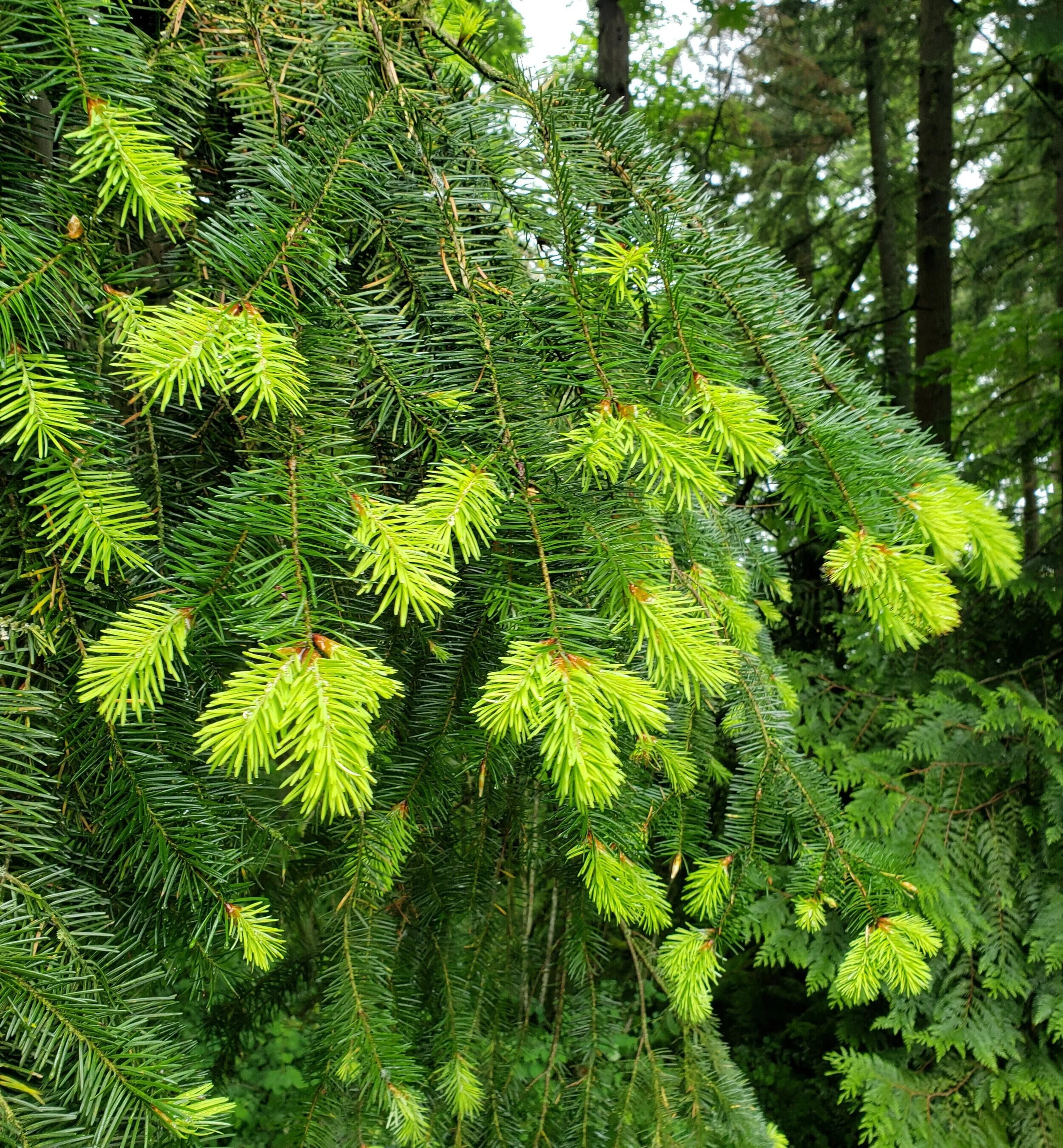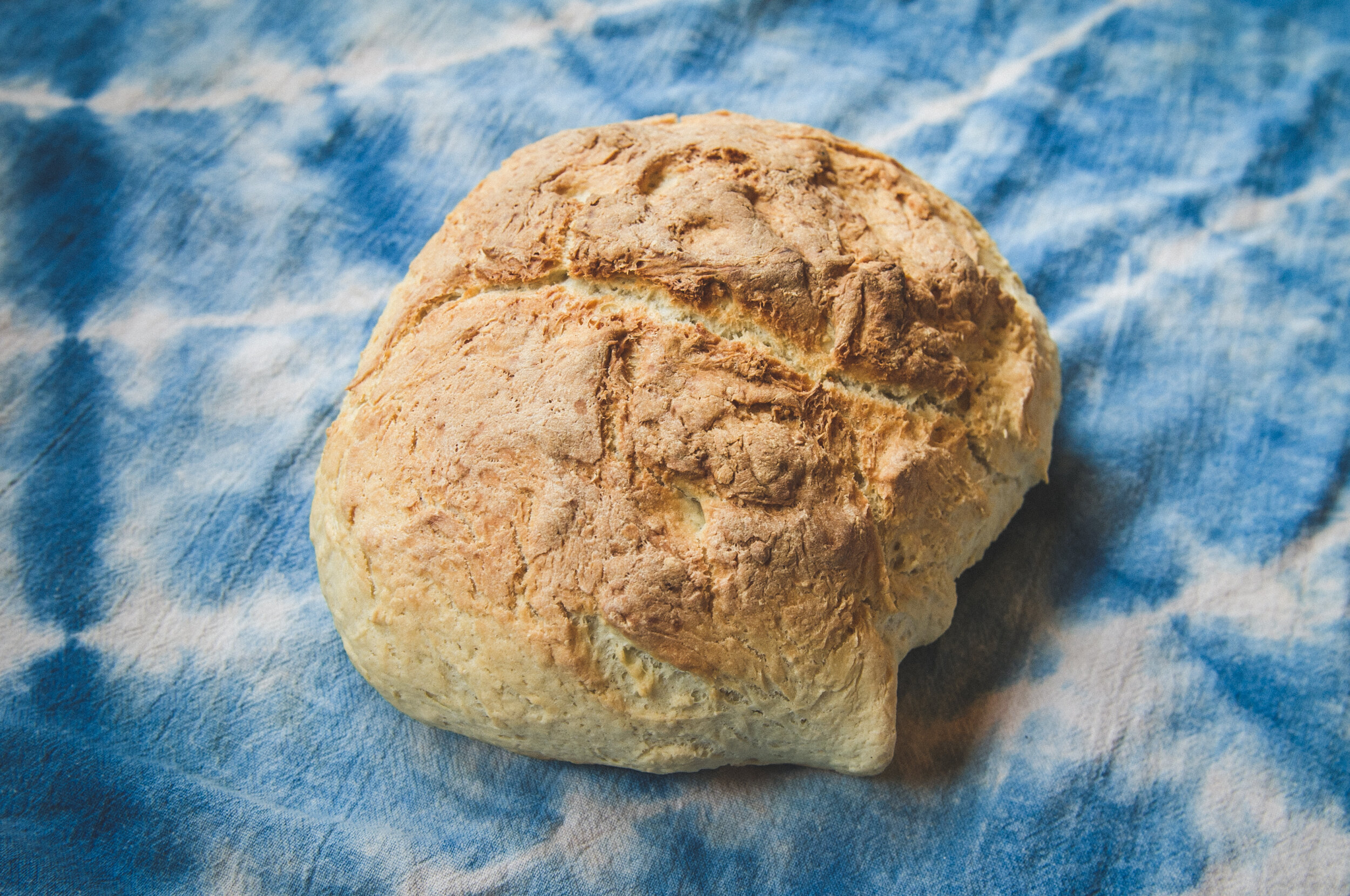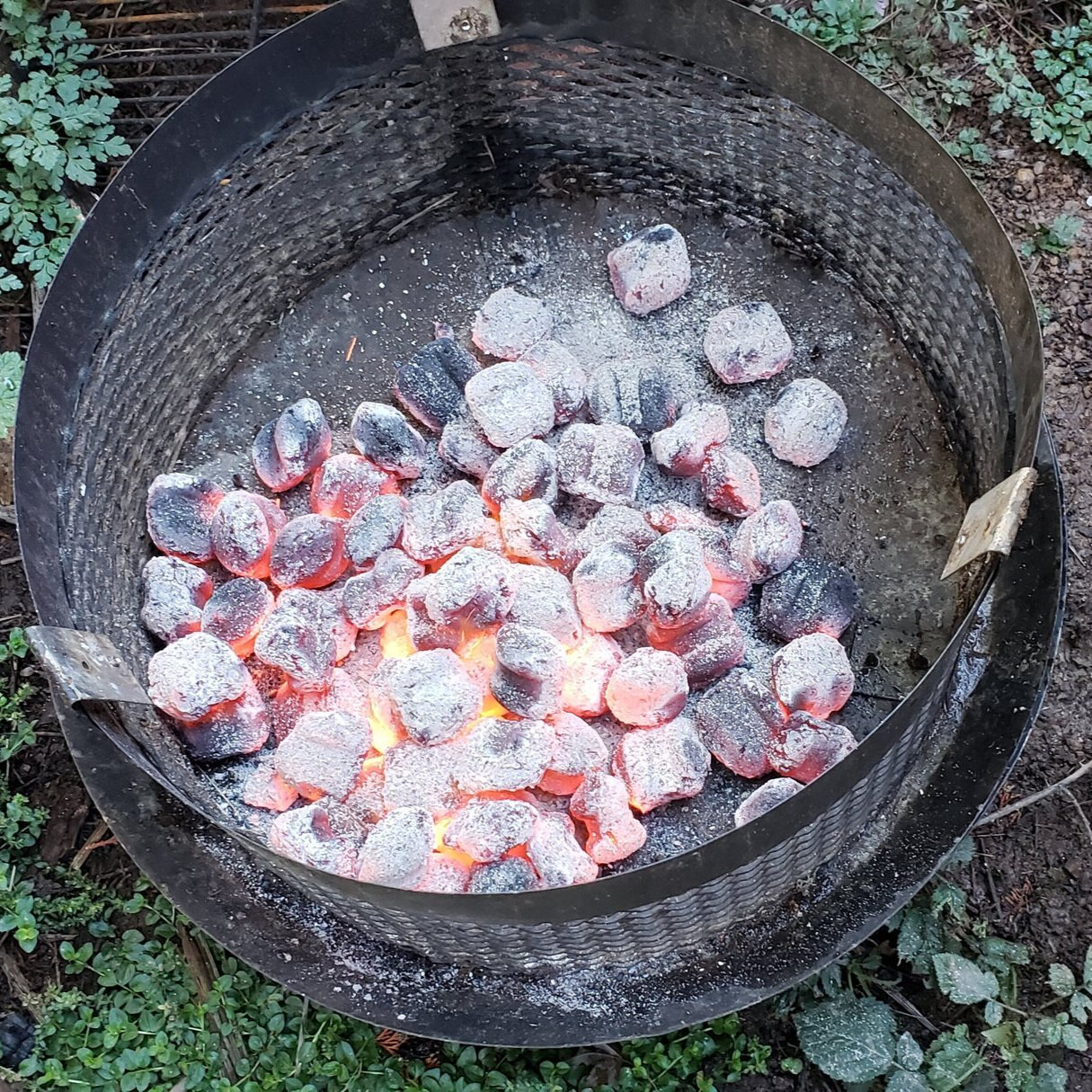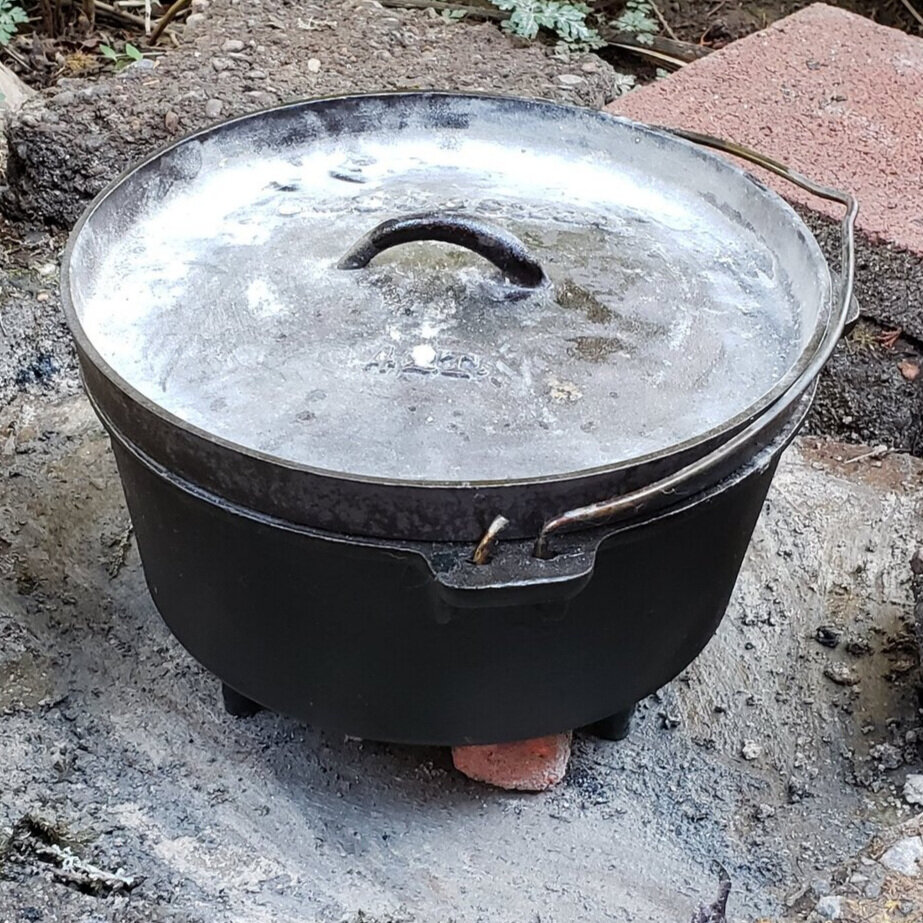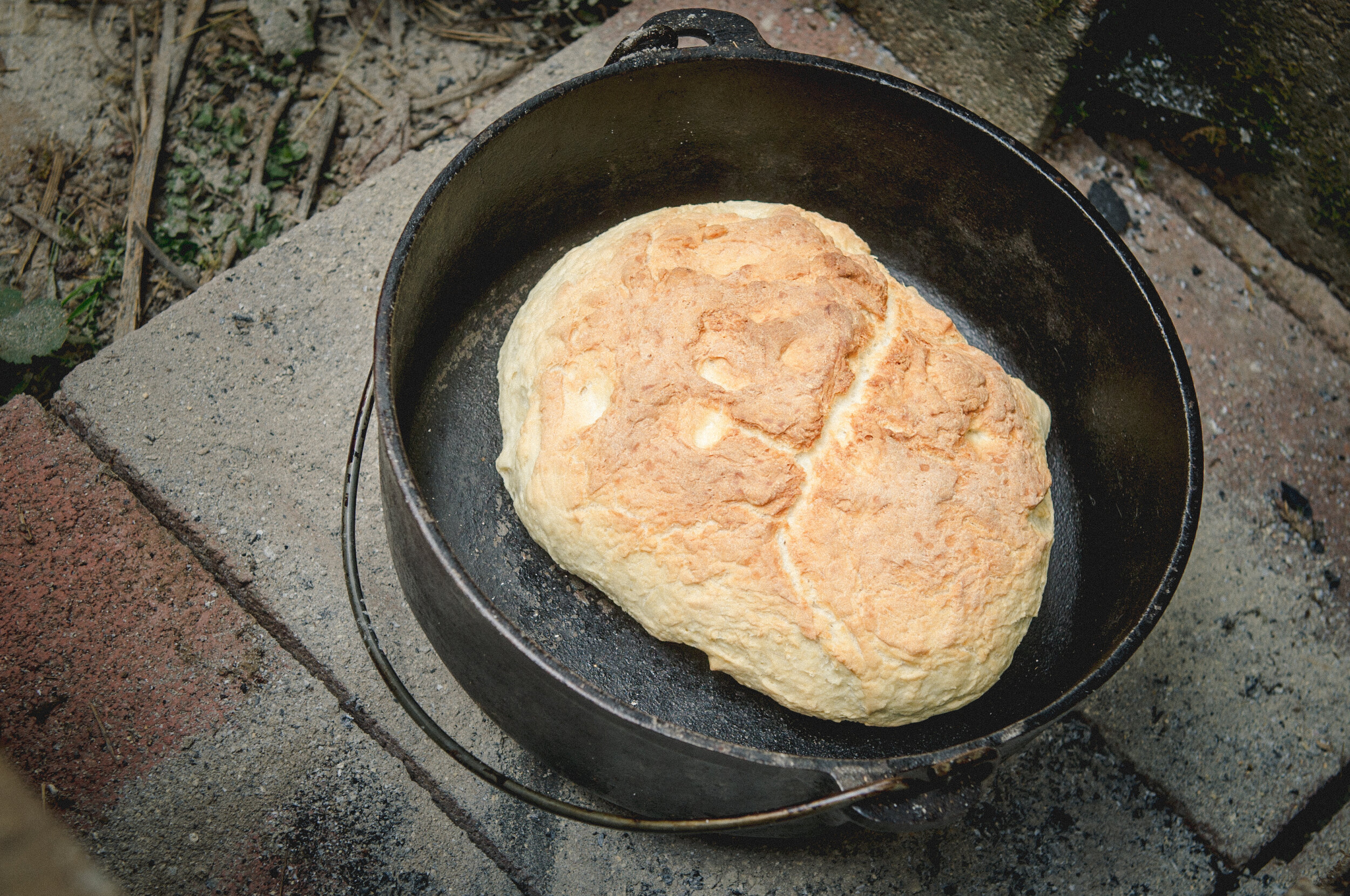Fir Needle Simple Syrup
/Have you noticed the bright green tips of the fir trees lately? I think they look like decorative tassels adorning these darn green trees. The bright tips are the new, spring growth and in addition to being a different color, they’re much softer than the older needles. They’re also delicious! We often add fir needles to tea when kids and families at our spring and winter programs need to warm up after playing outside in the chilly weather and it’s always a hit, especially with a little sweetener added. But this post is sharing a way to make a sweetener that’s infused with the unique flavor of the Douglas fir needles themselves. The taste is a little citrusy (the needles are packed with vitamin C!) and delightfully woodsy.
Simple syrup isn’t thick like pancake syrup but can be used to drizzle over fruit, as a glaze for cake, a unique topping for ice cream but is best known for its use as a sweetener for drinks. Adding fir needle simple syrup to a glass of carbonated water makes a delicious forest-inspired soda. Because it’s a syrup, it easily mixes with cold drinks. No more stirring granulated sugar around and around in your glass of iced tea before it dissolves. It’s great iced tea and lemonade. I’ve been enjoying it with my hot tea or coffee in the mornings and it lends a little forest flavor to my drink. You can also use it in place of regular simple syrup in your favorite cocktail recipe.
The Recipe
Ingredients:
young Douglas fir needles
water
sugar
Gather bright green fir tips in the spring. Be kind to the tree when you’re gathering them! Don’t take them all from the same part of the tree. This is the tree’s new growth and you want to leave some on the tree.
Rinse to remove any stray bugs or dirt.
Put needles in a large pot and cover with an inch or two of water. Bring to a boil then turn off the heat and leave the needles to steep. You can steep them for as long as 24 hours. The flavor will be stronger the longer they steep.
Strain to remove the needles and measure the remaining liquid.
Return liquid to the pot and add an equal amount of sugar. (Example: If you measured 3 1/2 cups of liquid, add 3 1/2 cups of sugar.)
Bring to a boil and stir until sugar is dissolved. This usually only takes a few minutes.
Let cool and store in the refrigerator. It will keep for about a month.
Canning Simple Syrup
If you made more than you can use in a month, you can can it!
Fill half-pint jars with hot syrup, leaving 1/4 inch headspace. Process in a water bath canner for 10 minutes. Turn off heat, leave in the water bath for 5 additional minutes before removing. Store jars in your pantry for up to a year. This way you can enjoy this taste of the spring forest even in the middle of winter. Fir needle simple syrup also makes a great gift!


